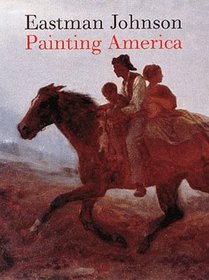Search -
Eastman Johnson: Painting America
Eastman Johnson Painting America
Author:
The first major Eastman Johnson retrospective in the last 25 years will be held at the Brooklyn Museum of Art from October 29, 1999 - February 6, 2000. To accompany this important exhibition is the catalogue "Eastman Johnson: Painting America." The paintings of Eastman Johnson (1824-1906) are distinguished icons of American art. Works such as... more »
Author:
The first major Eastman Johnson retrospective in the last 25 years will be held at the Brooklyn Museum of Art from October 29, 1999 - February 6, 2000. To accompany this important exhibition is the catalogue "Eastman Johnson: Painting America." The paintings of Eastman Johnson (1824-1906) are distinguished icons of American art. Works such as... more »
ISBN-13: 9780762877386
ISBN-10: 0762877383
Publication Date: 10/15/1999
Pages: 272
Rating: ?
ISBN-10: 0762877383
Publication Date: 10/15/1999
Pages: 272
Rating: ?
0 stars, based on 0 rating
Genres:
- Arts & Photography >> History & Criticism >> Regional >> United States
- Arts & Photography >> History & Criticism >> Schools, Periods & Styles
- Arts & Photography >> Individual Artists >> General
- Arts & Photography >> Art >> Painting >> General




